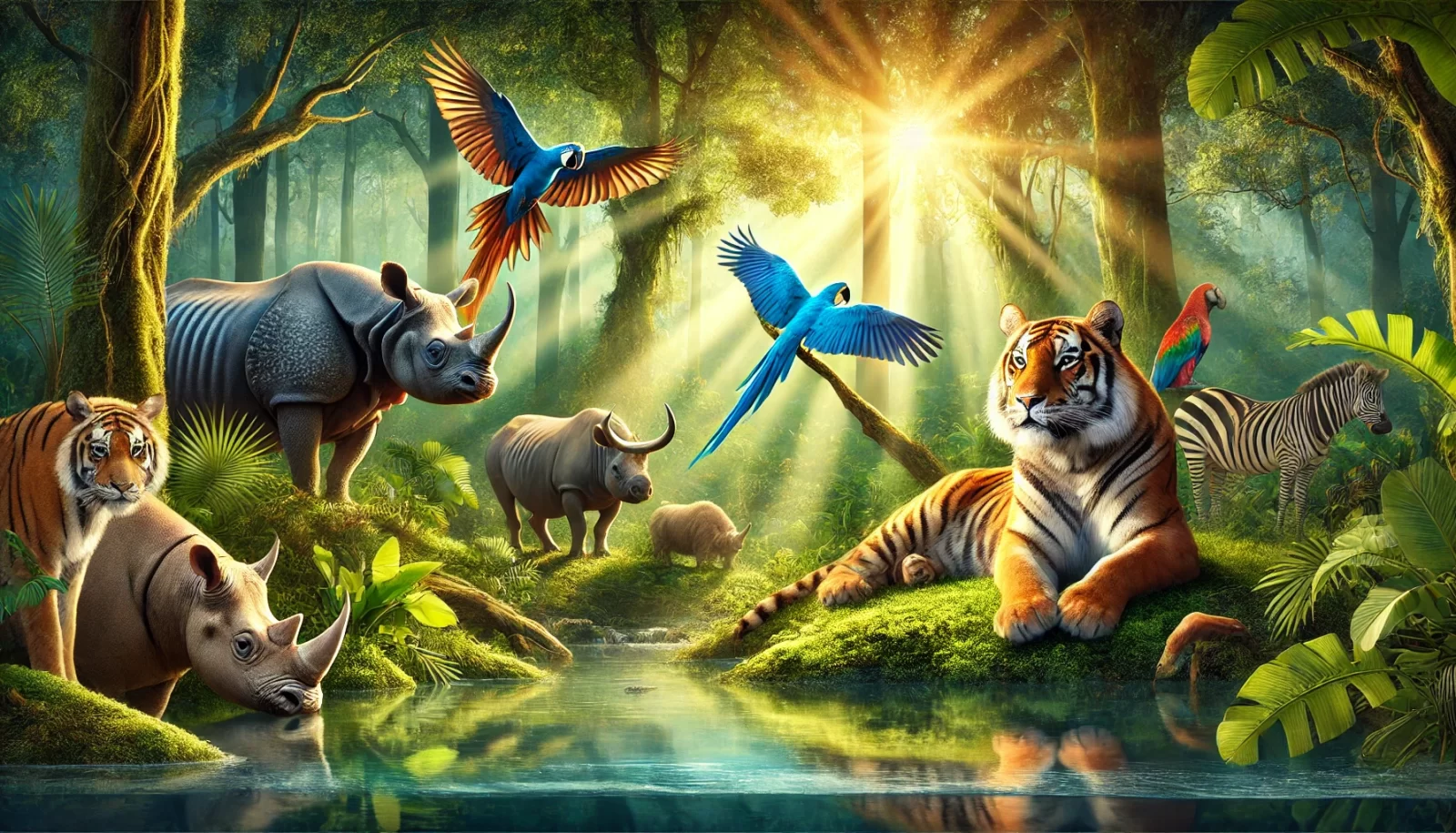🐧Penguins
 Emperor Penguin (Aptenodytes forsteri)
Emperor Penguin (Aptenodytes forsteri)

“Near Threatened” by the IUCN, it faces increasing risks due to the loss of sea ice, which is essential for its reproduction. In 2023, 20% of colonies experienced reproductive failures due to early ice melt, resulting in the death of thousands of chicks. (Reuters)
Each year, the fragile rhythm of life in the Antarctic faces greater disruption. Chicks born on unstable ice are left stranded, unable to survive the harsh conditions without the solid platform they depend on.
Behind every statistic lies a devastating reality: tiny lives lost before they even had a chance to thrive. Without urgent action, we risk witnessing a silent disappearance of a species that has endured for millennia, now helpless against the rapid changes we have set in motion.
Protecting them is not just a matter of conservation — it is a call for humanity to defend the most vulnerable voices of our planet.
 Chinstrap Penguin (Pygoscelis antarcticus)
Chinstrap Penguin (Pygoscelis antarcticus)

Although classified as “Least Concern,” its populations have declined by up to 77% in some colonies in recent decades, mainly due to the reduction of krill, its primary food source. (Time)
Behind this stark number lies a quiet struggle. These animals, once thriving in vast numbers, now swim longer distances and compete harder for every mouthful of krill. The shrinking food supply isn’t just a statistic — it’s a daily battle for survival. As oceans warm and ecosystems shift, we risk watching a slow-motion crisis unfold beneath the waves. If we ignore these early warning signs, we may one day look back and wonder how we let such a resilient species fade into silence.
 Southern Rockhopper Penguin (Eudyptes chrysocome)
Southern Rockhopper Penguin (Eudyptes chrysocome)

Listed as “Vulnerable,” it faces population declines due to habitat degradation and changes in ocean currents.
These disruptions aren’t just shifts in the water — they are the unraveling of an entire way of life. As ocean patterns change and their habitat becomes less predictable, these animals struggle to find safe nesting grounds and reliable food sources. Each season becomes more uncertain. The quiet disappearance of such a resilient species is a warning not just for conservationists, but for all of us. When the oceans suffer, life above the surface eventually feels the impact too.
🐋 Whales
 Blue Whale (Balaenoptera musculus)
Blue Whale (Balaenoptera musculus)

Classified as “Endangered,” it suffered drastic declines in the 20th century due to commercial whaling. Although its populations are slowly recovering, they still face threats such as ship collisions and habitat changes.
After enduring near extinction at the hands of whaling fleets, this species carries the scars of a brutal chapter in human history. Its slow comeback is a fragile triumph — one that could be undone by modern threats we still haven’t controlled. Every ship that crosses its path and every disrupted migration route is a reminder that survival remains a daily challenge. These giants of the ocean, once hunted to the brink, now rely on our awareness and action to ensure that their story doesn’t end in silence.
 Sei Whale (Balaenoptera borealis)
Sei Whale (Balaenoptera borealis)

Also “Endangered,” with populations estimated at around 50,000 individuals, it faces similar threats to the blue whale.
Though 50,000 may sound like a large number, it’s a whisper compared to what once roamed the oceans. These creatures, ancient and majestic, now navigate seas filled with danger — from massive ships to the noise pollution that drowns their songs. Like the blue whale, they are vulnerable not just because of their past, but because of our present. Their survival is a delicate balance, and without decisive global action, we risk letting another giant vanish from our planet’s story.
🐦 Albatrosses
 Tristan Albatross (Diomedea dabbenena)
Tristan Albatross (Diomedea dabbenena)

Critically Endangered, with an estimated population between 3,400 and 4,800 individuals, it suffers from longline fishing and the introduction of predators to its nesting areas.
With so few individuals left, every loss echoes loudly across their fragile population. Longline hooks and invasive predators have turned once-safe nesting grounds into silent graveyards. Each breeding season is a race against extinction, as chicks and adults alike face relentless threats. Their dwindling numbers remind us that conservation isn’t just about protecting wildlife — it’s about fighting to preserve entire ecosystems before they are gone forever.
 Sooty Albatross (Phoebetria fusca)
Sooty Albatross (Phoebetria fusca)

Classified as “Endangered,” it faces population declines due to longline fishing, pollution, and predation of chicks by giant petrels and introduced rodents.
The odds are stacked heavily against them. On land, invasive predators lurk near their nesting grounds; at sea, fishing lines and pollution threaten every journey for food. Chicks often don’t survive their first weeks of life, falling victim to dangers that never existed in their ancient natural environment. Each lost chick is not just a statistic — it is a lost future, a silent alarm warning us about the fragility of these remote ecosystems. Their survival now depends entirely on the actions we choose to take — or to ignore.
🐟 Fish and Others
 Antarctic Silverfish (Pleuragramma antarctica)
Antarctic Silverfish (Pleuragramma antarctica)

A keystone species in the Antarctic marine ecosystem, it has disappeared from areas where it was once abundant, possibly due to warming waters and changes in ice cover.
Once a cornerstone of the Antarctic food web, this species’ decline is a tragic sign of a system unraveling. Where it once thrived, the waters now stand empty, a silent testament to the rising temperatures and shifting ice. The loss of this species goes far beyond its own extinction — it marks the destabilization of the entire ecosystem. As temperatures rise and ice melts, the intricate balance of life in the polar regions teeters on the edge. The fate of this species is tied to our ability to confront climate change and protect the delicate web of life that depends on these frozen waters.


